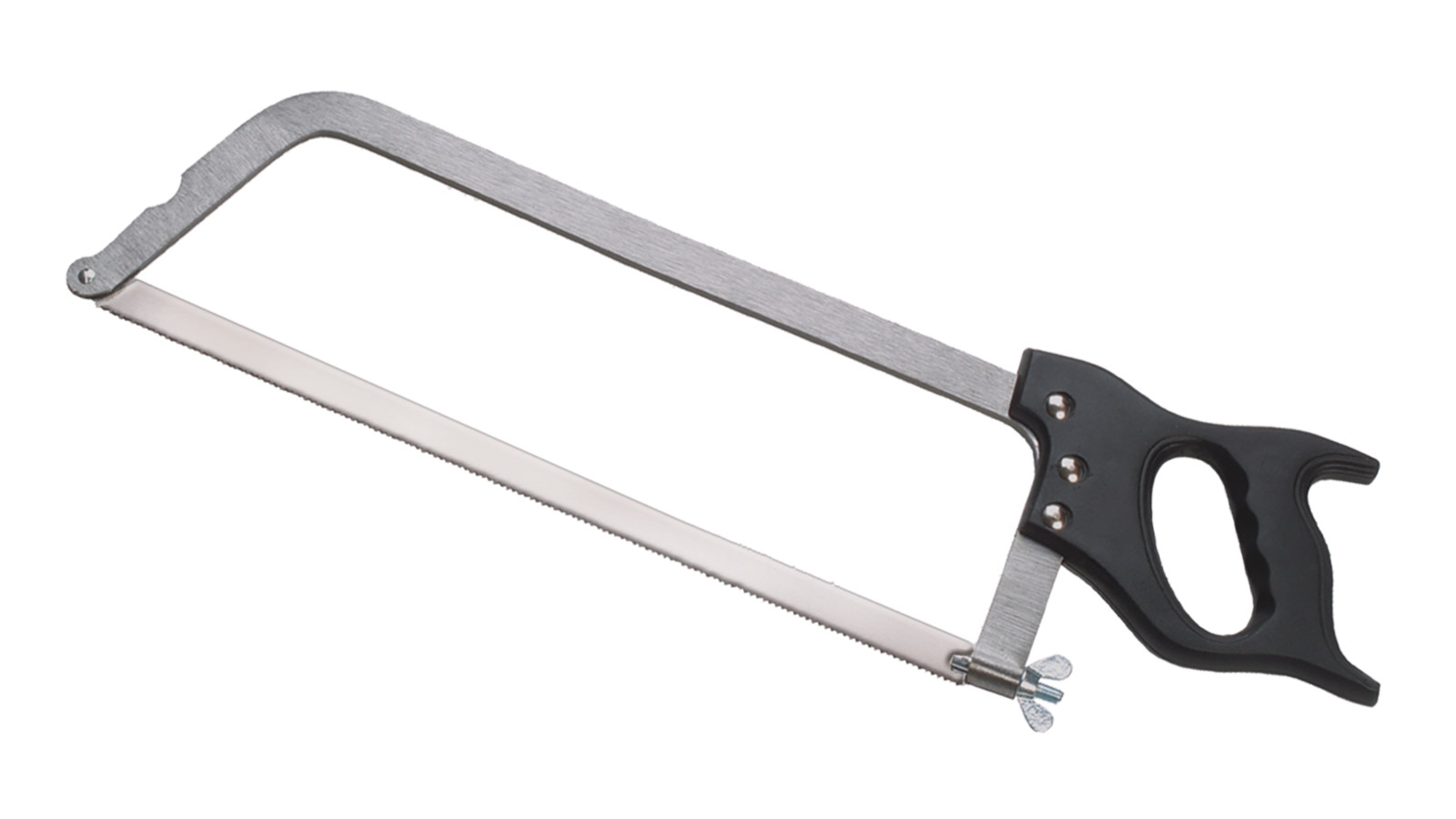A hacksaw and a handsaw are both tools used to cut materials such as wood, metal or plastic. The primary difference between the two is that the hacksaw is designed for cutting through harder materials like metals, while the handsaw is intended for cutting softer materials like wood.
Hacksaws have finer teeth than handsaws and they generally come with replaceable blades in various sizes so that you can use a different blade depending on what material you’re trying to cut through.
Hacksaws also have handles which allow them to be operated at an angle, making it easier to get into tight spaces when sawing. On the other hand, Handsaws tend to feature coarser teeth and cannot be adjusted as easily as a hacksaw since there are no replaceable blades available. Additionally, most handsaws do not have any handle attached; instead they must be held by their end in order for them to work properly.
Hacksaws and handsaws are both essential tools used for cutting various materials, but there are some key differences between the two. Hacksaws have finer blades with smaller teeth than handsaws, making them better suited for precise cuts such as small curves or tight angles. Handsaws on the other hand have much larger teeth that make them more suitable for rough cut jobs like large boards or thick logs.
Additionally, hacksaw blades can be replaced which makes it easier to switch out blades depending on the job at hand whereas a handsaw requires sharpening after each use in order to keep its cutting edge.

Credit: www.akah.eu
What is the Difference between Hacksaw And Hand Saw?
A hacksaw is a type of saw that consists of a handle attached to a frame with a thin, narrow blade stretched across it. The teeth on the blade are designed for cutting metal and plastic materials. On the other hand, a hand saw is slightly larger than the hacksaw and typically has thicker blades with wider teeth.
Hand saws usually have curved blades, which make them ideal for making precise cuts in wood or other soft materials like plaster and clay. They can also be used to cut through harder materials like concrete, but not as effectively as the smaller hacksaw blades.
Will a Hacksaw Cut Wood?
Yes, a hacksaw is an ideal tool for cutting wood. Its teeth are designed to easily cut through hardwood material as well as softer woods like pine, fir or spruce. The saw blade should be angled slightly so it cuts on the push stroke and not the pull stroke.
This will help prevent binding in the blade, which can cause run-out when making curved cuts. Additionally, using a lubricant such as wax or oil while sawing will reduce friction and increase the life of your blades. With proper use, a hacksaw should be able to handle most any wood cutting job you’re likely to encounter!
Is a Hacksaw Better Than a Handsaw for Pvc?
A hacksaw is generally considered to be better than a handsaw for cutting PVC. This is because a hacksaw has much sharper teeth, allowing it to make cleaner and more precise cuts in the plastic material. Additionally, its smaller size makes it easier to maneuver around tight corners or curves when making complex cuts.
Hacksaws also require less effort due to their ergonomic handles and adjustable blades, which allow you to adjust the blade tension for maximum control over your cut. Finally, most hacksaws come with replaceable blades that make them easy and inexpensive to maintain compared to handsaws.
What is Hand Hacksaw Used For?
A hand hacksaw is a tool used for cutting metal, plastic, and other materials. It consists of a thin metal frame that holds a blade in tension with two handles on either side. The blade has small teeth along its edge which make the sawing action more efficient.
Hand hacksaws are commonly used to cut through pipes and tubes, as well as metal rods and bars. They can also be used to shape objects or create irregular shapes by removing material from surfaces. With the right technique, they can provide precise cuts with minimal effort.
How to Choose Hand Saws | Ask This Old House
Hacksaw Vs Handsaw for Cutting Wood
When it comes to cutting wood, one of the main tools used is a saw. While there are many different types of saws available on the market today, two of the most popular for this purpose are hacksaws and handsaws. Hacksaws have an advantage over handsaws in that they can cut through thicker and harder materials with less effort due to their narrow blade design.
However, handsaws provide more control when cutting thinner pieces of wood as well as being easier to use for beginners since its blade is wider. Ultimately, choosing between a hacksaw or a handsaw depends on your individual needs and preferences.
Backsaw Vs Handsaw
A backsaw is a type of handsaw with a reinforced spine, allowing for more precise and controlled cuts than those made by traditional handsaws. The blade of the backsaw is typically thinner than that of a handsaw and the teeth have been filed in order to cut on both the push stroke (the pull stroke being ineffective). Backsaws are ideal for making accurate, clean cuts in materials such as wood or plastic.
They are usually used for fine joinery work, such as cutting tenons or dovetails.
Handsaw Vs Hacksaw Dayz
Handsaws and hacksaws are two types of saws commonly used in woodworking. A handsaw is a manual tool with a long handle and sharp teeth that can be used to make straight or curved cuts in materials such as wood, plastic, metal, or other materials. A hacksaw is similar to a handsaw but uses finer blades and has less power than a handsaw.
It usually has an adjustable blade length and angle for precise cutting of various shapes, sizes, and thicknesses of material. Both tools are useful for different purposes when working on projects involving cutting materials like wood or metal.
Hacksaw Vs Coping Saw
A hacksaw and a coping saw are two different tools that can be used for the same task: cutting through materials such as wood, metal, or plastic. The main difference between them is the type of blade they use. A hacksaw uses a narrow, rigid blade with small teeth along one side designed to cut straight lines and angles while a coping saw has flexible blades with larger teeth designed to make curved cuts.
While both tools have their advantages, depending on what kind of cuts you need to make will determine which tool works best for your project.
Conclusion
In conclusion, the hacksaw and handsaw are both valuable tools in their own right. The hacksaw is great for cutting through softer materials such as PVC pipe or thin metal sheets, while the handsaw excels at making straight cuts in hardwood. Each type of saw has its own distinct advantages and disadvantages that should be taken into consideration when selecting a tool for your project.
No matter which saw you choose, always wear protective gear to prevent injury from flying debris.
Table of Contents

